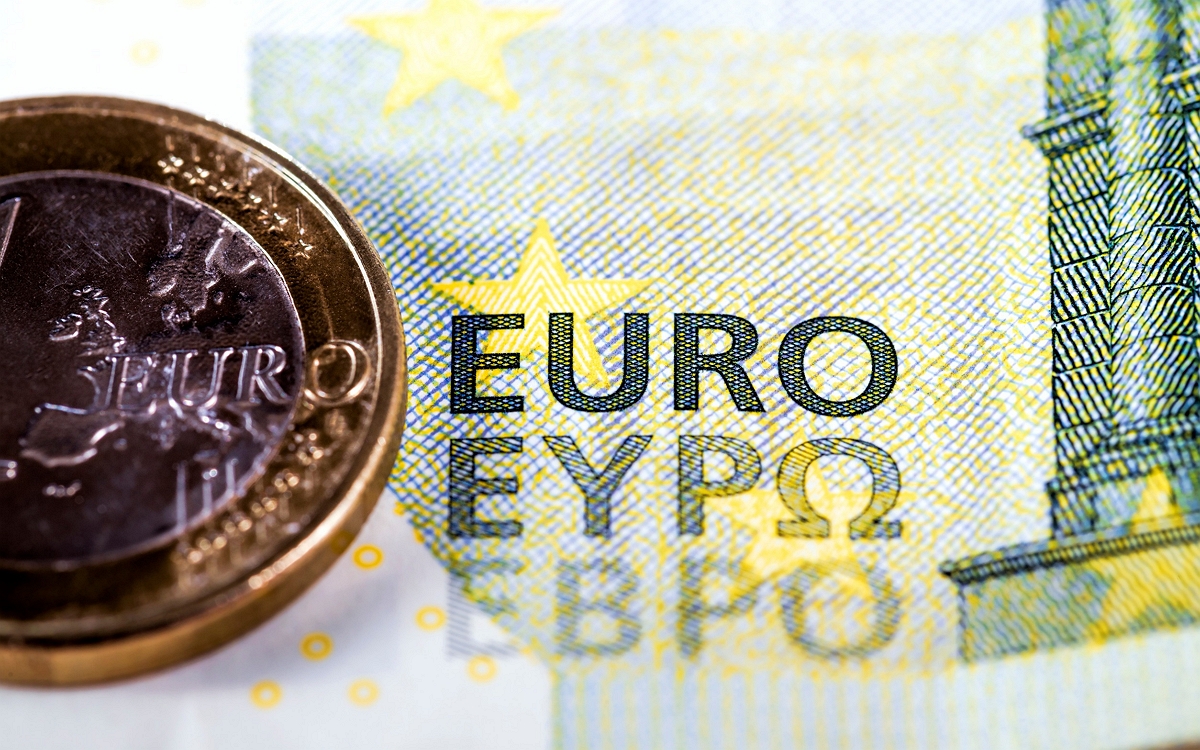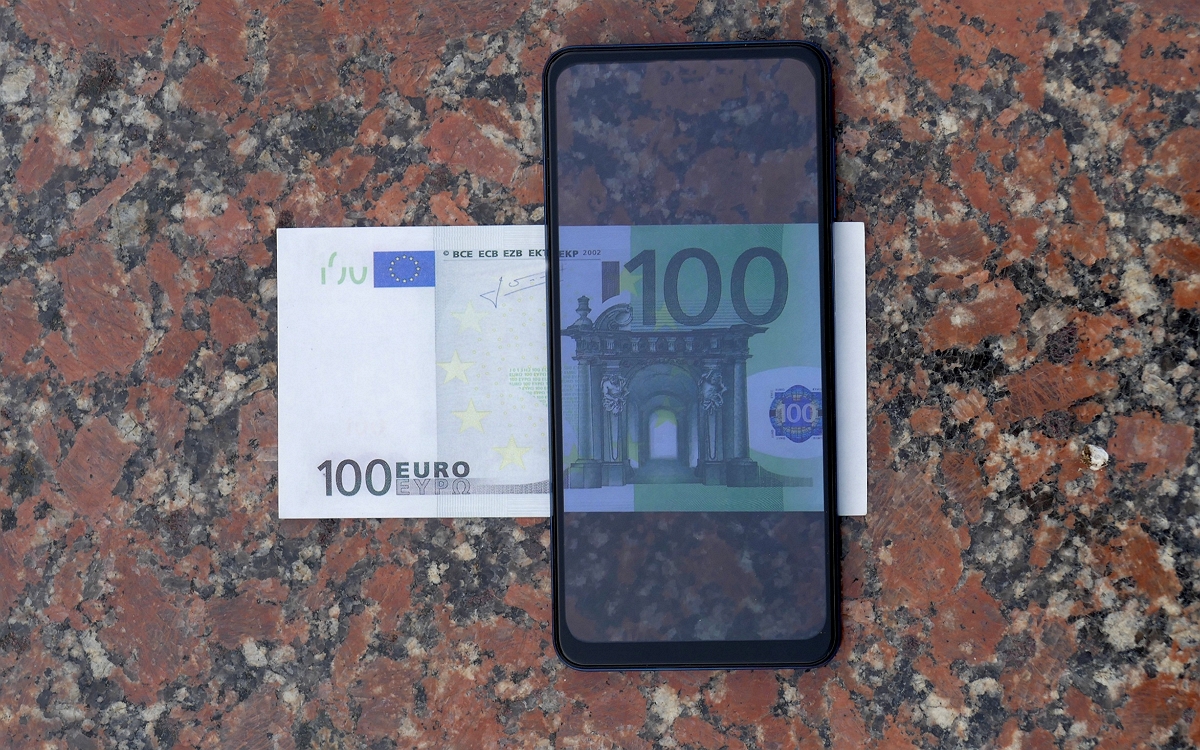The European Commission has presented a proposal setting out the legal framework for a possible digital euro that would operate alongside cash. We tell you everything we know about this new electronic money.
The EU’s central banking authority wants to modernize the euro to adapt it to the digital age and make the EU a digital power. For that, the ECB is considering issuing a digital version of our currency. The proposed legislation not only sets the framework for the possible introduction of the digital euro, but also underlines the legal tender status of the coin, thus ensuring its wide-scale acceptance in the eurozone even after the establishment of its equivalent virtual.
Also read – EPI: the European digital wallet will enter the testing phase from the end of 2023
What is the digital euro?
According to the ECB, the digital euro will be a form of central bank money which aims to bridge the gap between cash and electronic payments. Currently, there are two types of money: central bank money and private money. As a reminder, central bank money refers to physical cash issued by the central bank and guaranteed by the public sector. In contrast, private money is created by commercial banks through loans and includes our bank account balances and digital transactions.
The digital euro would be a central bank digital currency introduced by the European Central Bank (ECB). It would provide public money in electronic form, next to physical money. Much like using a card or mobile app for payments, the digital euro would allow users to carry out digital transactions. However, unlike private money, the digital euro will be guaranteed and supported by the ECB.

The ECB ensures that basic end-user services, such as opening and closing a digital euro account, checking balances, funding and defunding your digital euro account, and execution of transfers and payments, will be provided free of charge. In addition, users of a digital euro will not have not have to pay fees when making purchases in digital euroswhether at national or cross-border level.
The digital euro will provide a unified payment method across the euro area, regardless of the location of the payer or payment service provider used. Payments would be sent and received instantly, 24 hours a day.
It would therefore be a 100% electronic currency, just like Bitcoin or stablecoins. However, unlike cryptocurrencies, the value of the digital euro would be stable and guaranteed by the European Central Bank. It can be exchanged at face value for physical euros, providing a safe and reliable digital payment option. A digital euro will therefore be equal to a traditional euro, and this rate will not vary.
Who will be able to hold digital euros?
Accessibility is a key element of the project, with the proposal aiming to make the digital euro available to all EU citizens, upon request, through banking institutions. Additionally, the plan allows private intermediaries to distribute the digital euro along with other digital payment methods while protecting merchants from excessive fees, promoting economic inclusion.

Consumers will receive digital euros either from their commercial banks or payment service providers or from public bodies designated by Member States, in exchange for deposits or cash in euros.
According to the European Commission’s proposal, the digital euro would be available for payments even without an internet connection. Eurozone businesses would be required to accept the digital euro, except in limited circumstances for very small merchants, and basic services would be provided free of charge to individuals. Finally, note that digital euro accounts would not produce interest, according to the Commission.
Will the traditional euro disappear?
The ECB likely remains determined to preserve the role of cash in the payment system. The traditional euro should therefore not disappear immediately. The legislative proposal ensures continued acceptance of cash in physical transactions, thus preserving their legal tender. It also ensures that individuals and businesses can withdraw and deposit money, providing flexibility for those who prefer cash transactions.
The digital euro is intended to provide a digital equivalent to cash, to ensure that citizens have a choice between different forms of payment, including bank notes and coins, electronic payment methods private and the digital euro. The physical euro should therefore continue to coexist with the digital euro in the near future.
Why do we need a digital euro?
Cash has recently faced competition from electronic payment methods. To address this development, the digital euro will be designed with multiple objectives in mind, including ensuring access to a public form of digital currency, preserving privacy, encouraging innovation and strengthening strategic autonomy from Europe.

The introduction of the digital euro could strengthen the international role of our currency. This would position Europe at the forefront of monetary innovation, ensuring its continued influence in shaping the future of global finance. Central banks around the world are all exploring the potential of digital currencies.
Privacy will also be a key aspect of the digital euro, which will distinguish it from existing digital payment solutions. While current options often raise concerns about data security, the digital euro should guarantee the same level of confidentiality as cash transactionsassuring users that their personal information remains protected.
What security for the digital euro?
In terms of security, the digital euro would offer several advantages over existing private digital payment solutions. The European Commission particularly highlights the ability to make offline payments, which would allow users to send money even without an internet connection when they are physically close to the recipient. This function would guarantee theaccessibility of payments in remote areas or in the event of a network outage.
Offline use of the digital euro will then provide a cash-like experience, with users able to transact with a high degree of privacy, similar to cash payments.
Financial inclusion would also be promoted by the digital euro, since it would accessible to people who do not have a bank account. Public entities, such as local authorities and postal offices, will be able to distribute the digital euro to those who prefer not to have a digital euro bank account.
One of the objectives of this digital euro would be to strengthen the resilience of the currency by offering a regulated and secure alternative to unregulated technological developments in the banking and financial sectors, such as cryptoassets and alternative payment solutions that operate outside of the main ones. card systems.
The digital euro will not be a decentralized cryptocurrency, like bitcoin or stablecoins., the value of which is generally linked to the US dollar. These currencies are volatile and can always collapse, since they are not backed by a central bank. The digital euro will not face such a risk, since it will be considered the digital equivalent of our fiat currency.
The security of personal data is also a priority. Your information will mainly be accessed and processed by the user’s bank or payment service provider. Banks would need access to personal data to manage payment accounts, carry out transactions and prevent fraud and money laundering.

However, the European Central Bank will only have access to encrypted data necessary to settle digital transactions in euros and support payment service providers. Strict security measures will be put in place to protect user data and prevent direct identification of digital euro users.
The Commission has proposed forcing banks, insurers and funds to share their customer data with fintechs against payment, in order to stimulate the development of digital finance in the European Union. Companies holding data would be required to share it, upon a customer’s request, with companies that are members of data sharing programs, without undue delay and in real time.
When will the digital euro arrive?
For the moment, the issuance of a digital euro is still at the legislative proposal stage. The European Central Bank’s investigation phase ended in October 2023. The Governing Council of the ECB decided to continue the project by launching the preparatory phase on November 1, 2023. It will last at least 2 years and at the end, it will be necessary to again approve or not the departure of the second part of this phase.
The final decision on the issuance of the digital euro will be taken once the legislative act has been adopted, which will not arrive for several years, at least not before 2028, according to the European Commission. However, as always, these projections are often subject to change, so we will obviously keep you informed if a new schedule is established.
